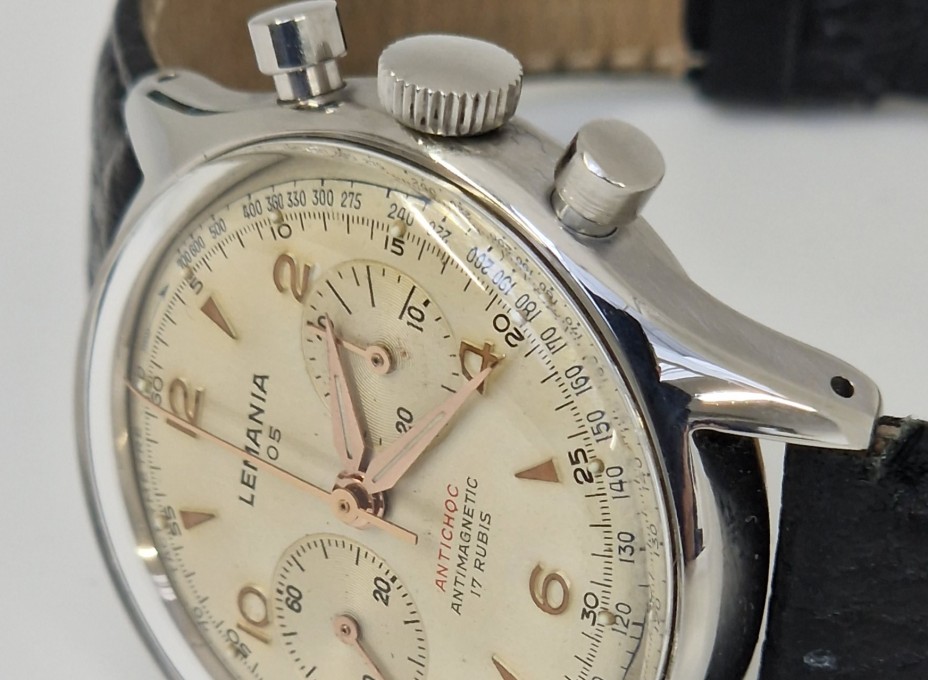
Vintage Series Part 1
Vintage watches - which is the right watch for me?
The following scenario is certainly familiar to every watchmaker: You've been invited to an event where people don't know you. During small talk, the question of your profession comes up very quickly. And if you then say that you are a qualified watchmaker, the next questions are not far away:
"Ah, watchmaker? I've inherited a watch from my grandfather, 1 A) can you tell me how much it's worth and B) whether it's worth repairing?"
Or: 2 "Which watch would you recommend to me, you know, I'm actually a watch fan and have always wanted to buy a 'good watch', but don't know which one."
Question 1 is quickly answered: A) The watch has as much (monetary) value as someone is willing to give you for it!
And B) the repair is worthwhile if you enjoy it and are prepared to pay the price.
(If you want to sell the watch after the repair and get a full refund, that's a different matter, of course, but this is not intended to be a sales guide).
But
Question 2 "Which watch would you recommend?" As a watchmaker, how should I answer this? The first time I was asked this question, I thought: Nothing could be easier!
That was during my apprenticeship and I simply stated my personal favorite brand.
But since the love of watches includes not only watchmaking expertise, the workmanship of the movement (which unfortunately is often only visible to us watchmakers) and the price, but also the history that has shaped the brand, the topic is not so easily dismissed.
The emotions that the marketing builds up around the various models also play a role and the matter is far more complex and my personal favorite brand is not necessarily that of my questioner.
Later I always said, why don't you buy a book first? For example: "How to buy an old wristwatch", or "The big watch ABC" or "Callwey's handbook of watch types" and get an overview of what's out there. Then we can discuss again.
But that doesn't do the matter justice (anymore). Firstly, you have to buy a few books that are no longer so easy to get hold of because they themselves are already vintage items, and secondly, depending on the type of watch, you spend a few hundred francs before you have a watch in your hand.
So I thought to myself: why not take advantage of the modern age, go to ebay.com and type in "wristwatch"!
The result: a staggering 1,837,302 entries. So that could be difficult...
Chrono24.ch, a platform specializing only in watches, also offers 496,018 from 127 countries at the time of my research. Ricardo.ch 31640, Catawiki (3344) etc., etc., etc.
The selection is huge. But how do you separate the wheat from the chaff? How do I buy a vintage watch as a layman? Or even a new watch? Click through all the forums? But how do I separate half-knowledge from genuine insider knowledge?
The chance of buying a fake or a watch that is no longer original in some aspect is not insignificant. Even if the platform operators go to great lengths to prevent counterfeiting, ultimately no one can guarantee it 100%. Every watch on offer would have to be analyzed in detail. Which would simply require too many resources. The following list, which I compiled in 2 minutes, proves that this is a problem:
https://www.wikihow.com/Identify-a-Fake-Watch
https://www.businessinsider.com/how-to-spot-a-fake-luxury-watch-2014-10?r=US&IR=T
https://www.jewellerymonthly.com/how-to-spot-a-fake-rolex-omega-tag-heuer-watch/
https://quillandpad.com/2015/06/23/6-ways-to-spot-a-fake-even-when-you-dont-know-how-to-spot-a-fake/
These links contain all the information on the subject of counterfeiting and the list can be extended as required and in any language. It refers to sites that sometimes give better, sometimes less good tips on how to distinguish non-original watches from original ones and how to protect yourself from buying deliberate fakes or subsequently modified watches.
From statements like:
"You really don't need to be an expert in this field to spot fakes among luxury watches"
to
"A counterfeit watch is not easy to spot"
to
"To recognize a fake watch with relative certainty, you have to be very familiar with the original"
but there are very different assessments.
So what is true? Who can I believe? Is it easy or difficult? What is the best way to proceed so as not to be disappointed?
No, I have to proceed differently... Back to field 1
The start of a (vintage) watch collection
(To be continued)
